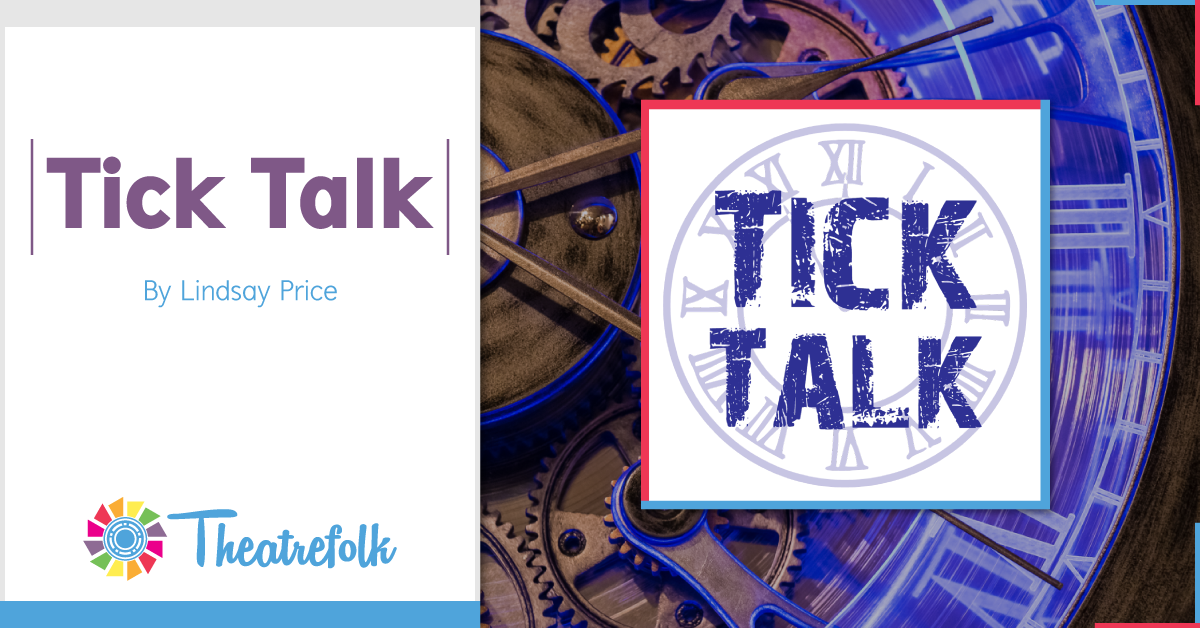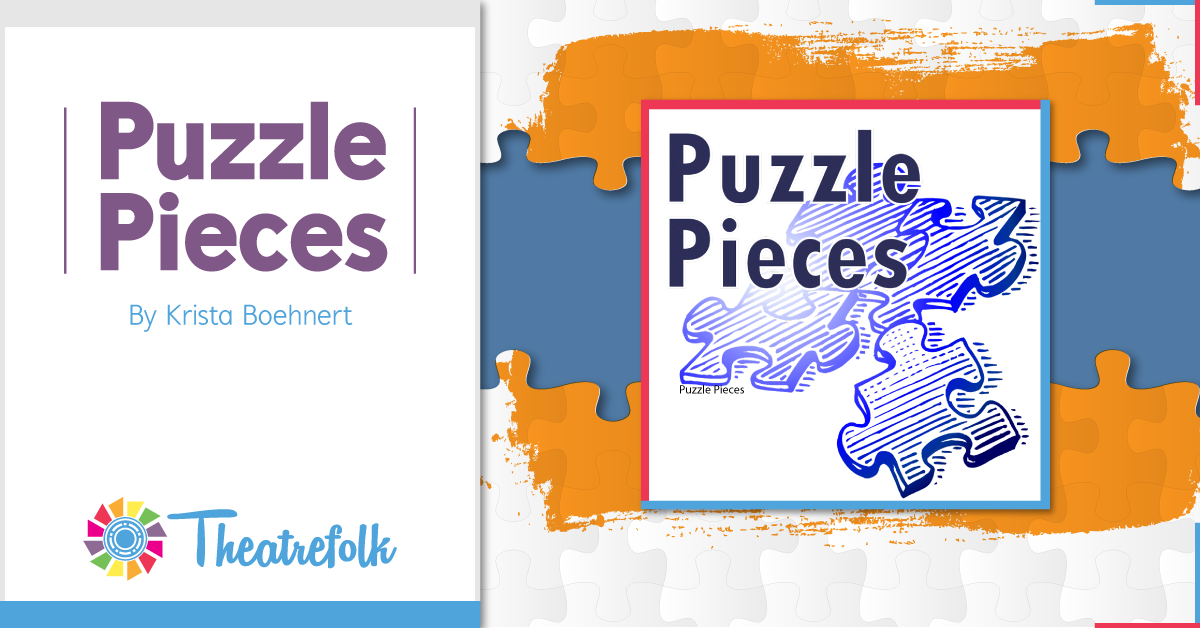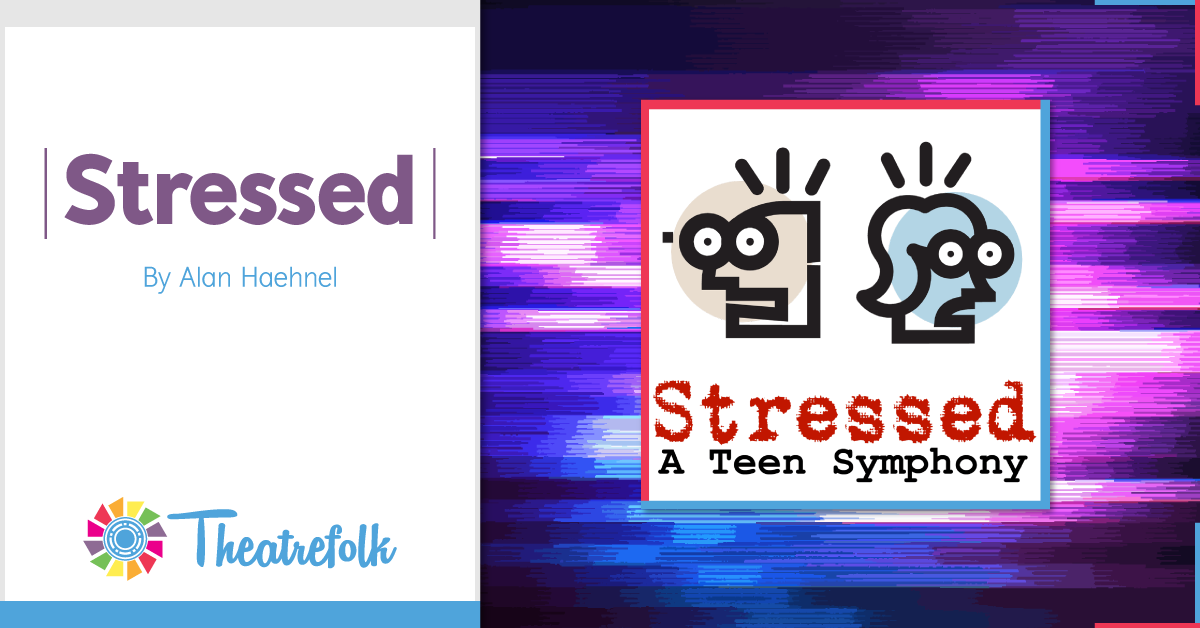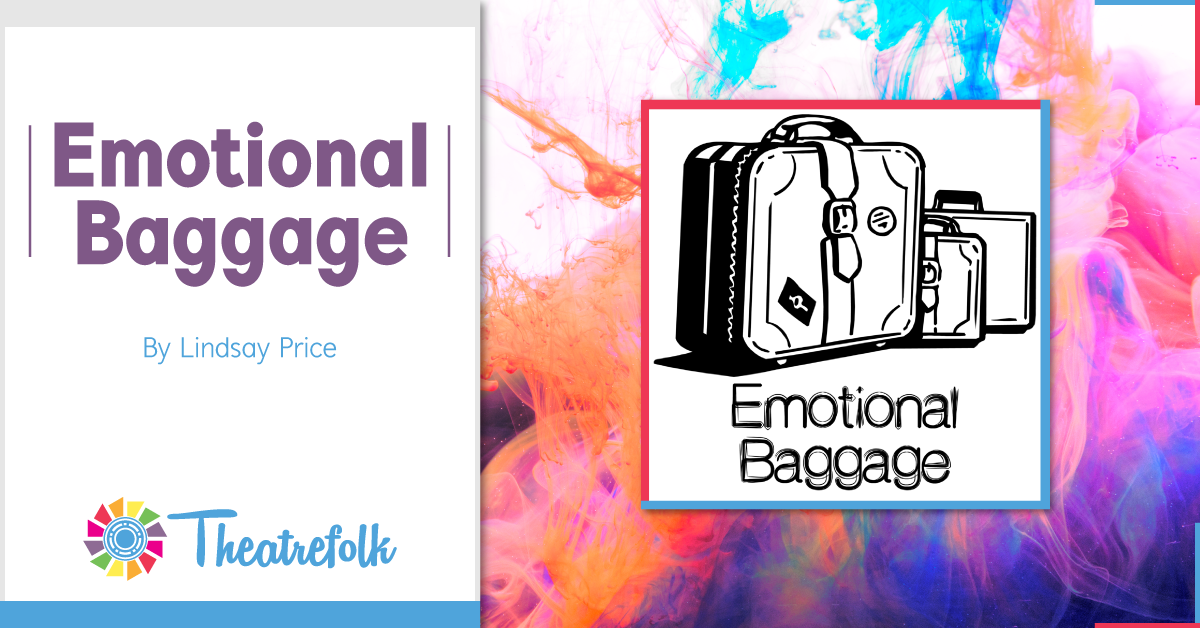
Theatrefolk Featured Play – Tick Talk by Lindsay Price
Welcome to our Featured Play Spotlight. Tick Talk by Lindsay Price is a wonderful technical exercise for high school student performers that also serves as a fantastic starting point for discussions.
The teenagers in Tick Talk have a lot to say, but no way to say it. Most characters are limited to only ONE WORD for the whole play.
A fascinating challenge for actors: What happens when a character has just one word to express hopes, fears, and frustrations? What if they have something terribly important to say but can’t? They’d better find a way soon: Time is running out.
Why did we publish this play?
“What If” questions are great questions to explore in theatre – “what if” characters only had one word or phrase to share their story and their experience? That is the world of the play in Tick Talk. How do we encourage students to find ways other than dialogue to create a three-dimensional characterization? Plays that challenge form, challenge students, and challenge the audience are important and that’s why Tick Talk is in our catalogue.
Let’s hear from the author!
1. Why did you write this play?
I love writing challenges. What if wrote a play where the characters have only one word or phrase to tell their story? What would that look like on the page? What would that look like in performance?
2. Describe the theme in one or two sentences.
The teenagers in this play have much to say but no way to say it.
3. What’s the most important visual for you in this play?
There is a character named Great Dance, who puts on the visual of being completely “happy” but we learn that she is also bulimic. The idea that people often hide darkness behind a positive face is something we often miss. We only focus on what we see.
4. If you could give one piece of advice for those producing the play, what would it be?
It’s all about the subtext. Every single line a character says in the play, even though it’s the same line over and over, has a different subtext. It’s important for students to figure out the meaning behind each line in order to help them know how to say it.
5. Why is this play great for student performers?
It’s a great challenge for students to take characters their own age who are limited in their dialogue. How will they make a three-dimensional character out of one word?


